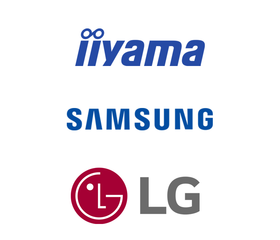Planet Industrial L2/L4 16-Port 10/100/1000T + 2-Port 100/1000X SFP Managed Switch | IGS-4215-16T2S
SKU: IGS-4215-16T2S

£269.04 (Excl. VAT)
- Description
- Specifications
- Downloads
-
Rugged 16-Port Industrial Gigabit Managed Switch with Dual SFP Uplinks for Mission-Critical Networks
Cost-effective Full Solution Ideal for Hardened Environment
Designed to be installed in heavy industrial demanding environments, the IGS-4215-16T2S / IGS-4215-16T2S-U is the new member of PLANET Industrial-grade, DIN-rail type L2/L4 Managed Gigabit Switch family to improve the availability of critical business applications. It provides IPv6/IPv4 dual stack management and built-in L2/L4 Gigabit switching engine along with 16 10/100/1000BASE-T ports, and 2 extra 100/1000BASE-X SFP fiber slots for data and video uplink. The IGS-4215-16T2S / IGS-4215-16T2S-U is able to operate reliably, stably and quietly in any hardened environment without affecting its performance. It comes with operating temperature ranging from -40 to 75 degrees C in a rugged IP30 metal housing.

Environmentally Hardened Design
With the IP30 industrial case, the IGS-4215-16T2S / IGS-4215-16T2S-U provides a high level of immunity against electromagnetic interference and heavy electrical surges which are usually found on plant floors or in curb-side traffic control cabinets without air conditioner. Being able to operate under the temperature range from -40 to 75 degrees C, the IGS-4215-16T2S / IGS-4215-16T2S-U can be placed in almost any difficult environment.Robust Protection
The IGS-4215-16T2S / IGS-4215-16T2S-U provides contact discharge of ±6KV DC and air discharge of ±8KV DC for Ethernet ESD protection. It also supports ±4KV surge immunity to improve product stability and protects users’ networks from devastating ESD attacks, making sure the flow of operation does not fluctuate.Redundant Ring, Fast Recovery for Critical Network Applications
The IGS-4215-16T2S / IGS-4215-16T2S-U supports redundant ring technology and features strong, rapid self-recovery capability to prevent interruptions and external intrusions. It incorporates advanced ITU-T G.8032 ERPS (Ethernet Ring Protection Switching) technology, Spanning Tree Protocol (802.1s MSTP) into customer’s network to enhance system reliability and uptime in various environments.Robust Layer 2 Features
The IGS-4215-16T2S / IGS-4215-16T2S-U can be programmed for advanced switch management functions such as dynamic port link aggregation, 802.1Q VLAN, Q-in-Q VLAN, Multiple Spanning Tree Protocol (MSTP), loop and BPDU guard, IGMP snooping, and MLD snooping. Via the link aggregation, the IGS-4215-16T2S / IGS-4215-16T2S-U allows the operation of a high-speed trunk to combine with multiple ports such as an 8Gbps fat pipe, and supports fail-over as well. Also, the Link Layer Discovery Protocol (LLDP) is the Layer 2 protocol included to help discover basic information about neighboring devices on the local broadcast domain.
IPv6/IPv4 Dual Stack Management
Supporting both IPv6 and IPv4 protocols, the IGS-4215-16T2S / IGS-4215-16T2S-U helps the SMBs to step in the IPv6 era with the lowest investment as its network facilities need not be replaced or overhauled if the IPv6 FTTx edge network is set up.
Efficient Traffic Control
The IGS-4215-16T2S / IGS-4215-16T2S-U is loaded with robust QoS features and powerful traffic management to enhance services to business-class data, voice, and video solutions. The functionality includes broadcast/multicast/unicast storm control, per port bandwidth control, 802.1p/CoS/IP DSCP QoS priority and remarking. It guarantees the best performance in VoIP and video stream transmission, and empowers the enterprises to take full advantage of the limited network resources.User-friendly and Secure Management
The IGS-4215-16T2S / IGS-4215-16T2S-U comes with enhanced cybersecurity to fend off cyberthreats and cyberattacks. It supports SSHv2, TLSv1.2 and SNMPv3 protocols to provide strong protection against advanced threats. Served as a key point to transmit data, the cybersecurity feature of the IGS-4215-16T2S / IGS-4215-16T2S-U protects the switch management and enhances the security of the mission-critical network without any extra deployment cost and effort.
Powerful Security
PLANET IGS-4215-16T2S / IGS-4215-16T2S-U offers comprehensive IPv4/IPv6 Layer 2 to Layer 4 Access Control List (ACL) for enforcing security to the edge. It can be used to restrict network access by denying packets based on source and destination IP address, TCP/UDP ports or defined typical network applications. Its protection mechanism also comprises 802.1X port-based user and device authentication, which can be deployed with RADIUS to ensure the port level security and block illegal users. With the Protected Port function, communication between edge ports can be prevented to guarantee user privacy. Furthermore, Port Security function allows limiting the number of network devices on a given port.Advanced Network Security
The IGS-4215-16T2S / IGS-4215-16T2S-U also provides DHCP Snooping, IP Source Guard and Dynamic ARP Inspection functions to prevent IP snooping from attack and discard ARP packets with invalid MAC address. The network administrators can now construct highly-secure corporate networks with considerably less time and effort than before.Remote Management Solution
PLANET's Universal Network Management System (UNI-NMS) and CloudViewer app support IT staff by remotely managing all network devices and monitoring PDs' operational statuses. Thus, they're designed for both the enterprises and industries where deployments of PDs can be as remote as possible, without having to go to the actual location once a bug or faulty condition is found. With the UNI-NMS or CloudViewer app, all kinds of businesses can now be speedily and efficiently managed from one platform.
Flexibility and Long-distance Extension Solution
The two additional SFP slots built in the IGS-4215-16T2S / IGS-4215-16T2S-U support 100BASE-FX /1000BASE-SX/LX SFP (Small Form-factor Pluggable) fiber transceivers to uplink to backbone switch in long distance. The distance can be extended from 550 meters to 2 kilometers (multi-mode fiber) and up to 120 kilometers (single-mode fiber or WDM fiber). They are well suited for applications within the enterprise data centers and distributions.
Intelligent SFP Diagnosis Mechanism
The IGS-4215-16T2S / IGS-4215-16T2S-U supports SFP-DDM (Digital Diagnostic Monitor) function that can easily monitor real-time parameters of the SFP for the network administrator, such as optical output power, optical input power, temperature, laser bias current, and transceiver supply voltage.
-
Specification Details Copper Ports 16 10/100/1000BASE-T RJ45 auto-MDI/MDI-X ports Gigabit SFP Slots 2 100/1000BASE-SX/LX/BX SFP interfaces Console IGS-4215-16T2S: 1 RJ45 serial port (115200,8, N, 1) IGS-4215-16T2S-U: 1 Micro-USB female port (115200,8, N, 1) RAM 128Mbytes Flash Memory 16Mbytes Reset Button < 5 sec: System reboot > 5 sec: Factory default Connector Removable 6-pin terminal block for power input Pin 1/2 for Power 1 Pin 3/4 for fault alarm Pin 5/6 for Power 2 Alarm One relay output for power failure. Alarm relay current carry ability: 1A @ 24V DC Power Requirements IGS-4215-16T2S: Dual 12~48V DC, 24V AC IGS-4215-16T2S-U: Dual 9~48V DC, 24V AC Power Consumption IGS-4215-16T2S: DC input: Max. 3.4 watts/11.6BTU (System on) Max. 12.5 watts/42.7BTU (Full loading) AC input: Max. 6 watts/20.5BTU (System on) Max. 15 watts/51.2BTU (Full loading) IGS-4215-16T2S-U: DC input: Max. 3.31 watts/11.3BTU (System on) Max. 10.41 watts/35.5BTU (Full loading) AC input: Max. 3 watts/10.2BTU (System on) Max. 10 watts/34.1BTU (Full loading) Dimensions (W x D x H) 66 x 107 x 152 mm Weight IGS-4215-16T2S: 813g IGS-4215-16T2S-U: 829g Enclosure IP30 metal case Installation DIN-rail kit and wall-mount ear ESD Protection 6KV DC LED Indicators System: Green: Power 1 Green: Power 2 Red: Power Fault Per 10/100/1000T RJ45 Ports: Green: 1000 LNK/ACT Orange: 10/100 LNK/ACT Per SFP Interface: Green: 1000 LNK/ACT Orange: 100 LNK/ACT Switching Specifications Switch Architecture: Store-and-Forward Switch Fabric: 36Gbps (non-blocking) Switch Throughput @ 64 bytes: 26.79Mpps MAC Address Table: 8K entries Shared Data Buffer: 4.1Mbits Flow Control: IEEE 802.3x pause frame for full duplex, Back pressure for half duplex Jumbo Frame: 10 Kbytes Layer 2 Functions Port Mirroring: TX/RX/Both, Many-to-1 monitor, Up to 4 sessions VLAN: 802.1Q tagged-based VLAN, Up to 256 VLAN groups, out of 4094 VLAN IDs, 802.1ad Q-in-Q tunneling (VLAN stacking), Voice VLAN, Protocol VLAN, Private VLAN (Protected port), GVRP Link Aggregation: IEEE 802.3ad LACP and static trunk, Cisco ether-channel (Static Trunk), Up to 8 trunk groups, Up to 8 ports per trunk group with 16Gbps bandwidth Spanning Tree Protocol: IEEE 802.1D Spanning Tree Protocol (STP), IEEE 802.1w Rapid Spanning Tree Protocol (RSTP), IEEE 802.1s Multiple Spanning Tree Protocol (MSTP), STP BPDU Guard, BPDU Filtering and BPDU Forwarding IGMP Snooping: IPv4 IGMP snooping v1, v2, v3, IGMP querier, Up to 256 multicast groups MLD Snooping: IPv6 MLD snooping v1, v2, up to 256 multicast groups QoS: Ingress/Egress Rate Limit per port bandwidth control, 8-level priority for switching, Port number, 802.1p priority, DSCP/IP precedence of IPv4/IPv6 packets, Typical network application, DSCP remarking Ring: Supports ERPS, and complies with ITU-T G.8032, Recovery time < 450ms Security Functions Access Control List: IPv4/IPv6 IP-based ACL/MAC-based ACL, IPv4/IPv6 IP-based ACE/MAC-based ACE, Max. 256 ACL entries Port Security: IEEE 802.1X – Port-based authentication, Built-in RADIUS client to co-operate with RADIUS server, RADIUS/TACACS+ user access authentication MAC Security: IP-MAC port binding, MAC filter, Static MAC address, max. 256 static MAC entries Enhanced Security: DHCP Snooping and DHCP Option82, STP BPDU guard, BPDU filtering and BPDU forwarding, DoS attack prevention, ARP inspection, IP source guard Management Functions Basic Management Interfaces: Console; Telnet; Web browser; SNMP v1, v2c Secure Management Interfaces: SSHv2, TLS v1.2, SNMP v3 System Management: Firmware upgrade by HTTP protocol through Ethernet network, Configuration upload/download through HTTP, Remote Syslog, System log, LLDP protocol, SNTP, PLANET Smart Discovery Utility, PLANET NMS System/CloudViewer app Event Management: Remote/Local Syslog, System log SNMP MIBs: RFC 1213 MIB-II, RFC 1493 Bridge MIB, RFC 1643 Ethernet MIB, RFC 2863 Interface MIB, RFC 2665 Ether-Like MIB, RFC 2819 RMON MIB (Groups 1, 2, 3 and 9), RFC 2737 Entity MIB, RFC 2618 RADIUS Client MIB, RFC 2863 IF-MIB, RFC 2933 IGMP-STD-MIB, RFC 3411 SNMP-Frameworks-MIB, RFC 4292 IP Forward MIB, RFC 4293 IP MIB, RFC 4836 MAU-MIB, IEEE 802.1X PAE, LLDP, MAU-MIB Standards Conformance Regulatory Compliance: FCC Part 15 Class A, EN 55032, EN 55035, ICES-003 issue 7 Certification: EN50121-4 Stability Testing: IEC 60068-2-32 (free fall), IEC 60068-2-27 (shock), IEC 60068-2-6 (vibration) Standards Compliance: IEEE 802.3 10BASE-T, IEEE 802.3u 100BASE-TX/100BASE-FX, IEEE 802.3z Gigabit SX/LX, IEEE 802.3ab Gigabit 1000T, IEEE 802.3x flow control and back pressure, IEEE 802.3ad port trunk with LACP, IEEE 802.1D Spanning Tree Protocol, IEEE 802.1w Rapid Spanning Tree Protocol, IEEE 802.1s Multiple Spanning Tree Protocol, IEEE 802.1p Class of Service, IEEE 802.1Q VLAN tagging, IEEE 802.1x Port Authentication Network Control, IEEE 802.1ab LLDP, IEEE 802.3az for Energy-Efficient Ethernet, RFC 768 UDP, RFC 783 TFTP, RFC 791 IP, RFC 792 ICMP, RFC 2068 HTTP, RFC 1112 IGMP v1, RFC 2236 IGMP v2, RFC 3376 IGMP v3, RFC 2710 MLD v1, FRC 3810 MLD v2, ITU G.8032 ERPS Ring Environment Operating Temperature: -40 ~ 75 degrees C Storage Temperature: -40 ~ 85 degrees C Humidity: 5 ~ 95% (non-condensing) -
Description Downloads Planet Industrial L2/L4 16-Port 10/100/1000T + 2-Port 100/1000X SFP Managed Switch | IGS-4215-16T2S Datasheet Downloads
Book a Free Product Demo
Remote or on-site. No obligation.
Integrator or Installer?
Trade pricing, volume discounts, same-day collection.
Education & Public Sector Solutions
Exclusive pricing, flexible terms, and dedicated support for schools, universities, NHS, and government organisations.


Need help choosing the right product?
Speak directly with a dedicated Screen Moove expert and get the right solution, first time.
Call us on: 020 8191 9223
Email us: info@screenmoove.com
Contact us
Simply complete our contact form, and we will promptly respond to your inquiries.
If you have any questions or enquiry, please fill out the form below with all of your details and we'll get back to you shortly.























